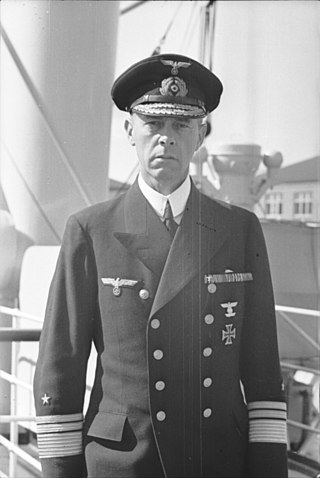Lieutenant Commander is a commissioned officer rank in many navies. The rank is superior to a lieutenant and subordinate to a commander. The corresponding rank in most armies and air forces is major, and in the Royal Air Force and other Commonwealth air forces is squadron leader.
The United States Air Force officer rank insignia in use today.
The chart below shows the current enlisted rank insignia of the United States Army, with seniority, and pay grade, increasing from right to left. The enlisted ranks of corporal (E-4) and higher are considered non-commissioned officers (NCOs). The rank of specialist is also in pay grade E-4, but does not hold non-commissioned officer status; it is common that a soldier may never hold the rank of corporal, and instead be promoted from specialist to sergeant, attaining junior NCO status at that time.
Officer Cadet is a rank held by military cadets during their training to become commissioned officers. In the United Kingdom, the rank is also used by members of University Royal Naval Units, University Officer Training Corps and University Air Squadron; however, these are not trainee officers with many not choosing a career in the armed forces.
Sub-lieutenant is usually a junior officer rank, used in armies, navies and air forces.
Korvettenkapitän is the lowest ranking senior officer in a number of Germanic-speaking navies.

The military ranks of Israel are the military insignia used by the Israel Defense Forces (IDF). Because the IDF is an integrated force, ranks are the same in all services The ranks are derived from those in the paramilitary Haganah, which operated during the Mandate period in order to protect the Yishuv.
United States Army commissioned officers rank insignia in use today.

In the United States Armed Forces, the ranks of warrant officer are rated as officers above all non-commissioned officers, candidates, cadets, and midshipmen, but subordinate to the lowest officer grade of O‑1. This application differs from the Commonwealth of Nations and other militaries, where warrant officers are the most senior of the other ranks, equivalent to the U.S. Armed Forces grades of E‑8 and E‑9.

The Civil Engineer Corps (CEC) is a staff corps of the United States Navy. CEC officers are professional engineers and architects, acquisitions specialists, and Seabee Combat Warfare Officers who qualify within Seabee units. They are responsible for executing and managing the planning, design, acquisition, construction, operation, and maintenance of the Navy's shore facilities. The Civil Engineer Corps is under the command of the Chief of Civil Engineers and Commander, Naval Facilities Engineering Systems Command. On 12 August 2022, RADM Dean VanderLey relieved RADM John W. Korka, becoming the 46th commander of NAVFAC and Chief of Civil Engineers.

The uniforms of the United States Air Force are the standardized military uniforms worn by airmen of the United States Air Force to distinguish themselves from the other services.

A rear admiral in the uniformed services of the United States is either of two different ranks of commissioned officers: one-star flag officers and two-star flag officers. By contrast, in most other countries, the term "rear admiral" refers only to an officer of two-star rank.

Lieutenant commander (LCDR) is a senior officer rank in the United States Navy, the United States Coast Guard, the United States Public Health Service Commissioned Corps, and the National Oceanic and Atmospheric Administration Commissioned Officer Corps, with the pay grade of O-4 and NATO rank code OF-3. Lieutenant commanders rank above lieutenants and below commanders. The rank is also used in the United States Maritime Service. The rank is equivalent to a major in the United States Army, United States Air Force, United States Marine Corps, and United States Space Force.
Colonel is a rank in the Indian Army. Like other armies, this rank is higher than lieutenant colonel and lower than a brigadier. It is equivalent to captain in the Indian Navy and group captain in the Indian Air Force.

Captain is a rank in the Indian Navy. Captain ranks above the rank of Commander and lower than a Commodore. It is equivalent to colonel in the Indian Army and group captain in the Indian Air Force.
Lieutenant (abbreviated Lt, LT (U.S.), LT(USN), Lieut and LEUT, depending on nation) is a commissioned officer rank in many English-speaking nations' navies and coast guards. It is typically the most senior of junior officer ranks. In most navies, the rank's insignia may consist of two medium gold braid stripes, the uppermost stripe featuring an executive curl in many Commonwealth of Nations; or three stripes of equal or unequal width.

The Kriegsmarine was the navy of Nazi Germany prior to and during World War II. Kriegsmarine uniform design followed that of the preexisting Reichsmarine, itself based on that of the First World War Kaiserliche Marine. Kriegsmarine styles of uniform and insignia had many features in common with those of other European navies, all derived from the British Royal Navy of the 19th century, such as officers' frock coats, sleeve braid, and the "sailor suit" uniform for enlisted personnel and petty officers.

Lieutenant general is the second-highest rank of the Sri Lanka Army and generally it is the highest active rank as the Sri Lanka army do not have any appointment in the rank of full general but in the case of the appointment of Chief of Defence Staff, the rank of full general is given. It was created as a direct equivalent of the British military rank of lieutenant general, and is considered a three-star rank.
The rank insignia of the Austro-Hungarian Navy were worn on and on sleeves for navy jackets and coats, or on shoulder straps of shirts and white jackets. Officers' ranks were indicated by lines of 1.3 centimetres (0.51 in) gold braid as were senior non-commissioned officers' ranks, enlisted men's rank was indicated by white stars on their square collar flaps. Senior officers and flag officers would wear a broader gold braid line of 3.3 centimetres (1.3 in) and 5.3 centimetres (2.1 in) resp. beneath smaller lines, in addition flag officers would wear a crown on top of their sleeve insignia.
Lieutenant commander is a senior officer rank in the Royal Navy of the United Kingdom. It is immediately junior to commander and immediately senior to the naval rank of lieutenant.









